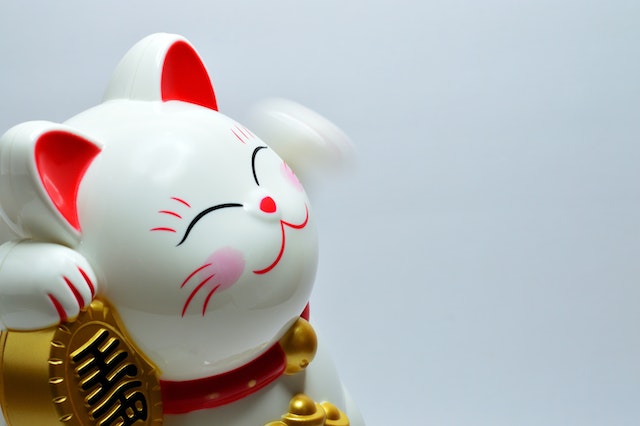
White, the color that represents purity, innocence, and cleanliness. White is a color imbued with profound symbolism that resonates across cultures and contexts. Universally recognized as a representation of purity and innocence, white embodies a sense of cleanliness and virtue. It evokes a feeling of serenity, tranquility, and peace, often associated with new beginnings and fresh starts. White also symbolizes clarity, simplicity, and openness, reflecting a blank canvas ready to be filled with possibilities.
In many spiritual and religious traditions, white holds sacred significance, signifying divine light, enlightenment, and spiritual awakening. Furthermore, white can connote a sense of neutrality, objectivity, and impartiality, often used to convey the absence of bias or hidden agendas. Its versatility in symbolizing concepts ranging from purity and spirituality to neutrality and simplicity makes white a color that captivates the imagination and carries rich layers of meaning, including the symbolism of eggshell.
White Color Meanings in Different Cultures


White, often associated with purity and innocence, holds diverse meanings in different cultures worldwide. In Western cultures, white is closely tied to weddings and symbolizes a new beginning. It represents clarity, simplicity, and a blank canvas for creativity in interior design. White walls convey sophistication and freshness, while white clothing signifies elegance. In addition, white environments create a sense of serenity and tranquility, making them popular choices for spa retreats and meditation spaces.
In contrast, Eastern cultures view white as a color of mourning and associate it with death and emptiness. However, white still holds positive connotations in these cultures, symbolizing rebirth and purification. In Christianity, white is linked to the Holy Spirit and represents redemption and renewal of sins. By incorporating these varied interpretations, the color white becomes a complex hue that evokes both positive and negative emotions.
What Does the Color White Mean in the Bible?
White holds significant symbolism in the Bible, representing purity, righteousness, and holiness. It portrays divine light and God’s presence. Angels, heavenly beings, and saints are often described as wearing white garments. Additionally, white pewter signifies forgiveness, renewal, and spiritual cleansing.

Color White Meaning


White color represents purity, innocence, and cleanliness. It embodies peace, tranquility, and simplicity. In many cultures, white color is associated with weddings and symbolizes new beginnings. Certain religions, such as Christianity, consider white as sacred and use it in rituals or for attire worn by priests. However, in some contexts, white can be associated with emptiness or lack of emotion. White color has positive associations and signifies goodness, clarity, and positivity. It is the lightest color and often serves as a blank canvas in interior design.
From an Eastern perspective, white can represent coldness or sterility, while in Western culture, it is often considered the color of purity. White is also known for its associations with the divine, as it is related to the presence of God and the holy spirit. It is the color of angels, heavenly beings, and the garments of saints. In addition, white is the color of mourning in certain cultures, such as in parts of the Middle East and South America, where it symbolizes sadness and loss.
Physical Effects of White

White, the color often associated with purity, innocence, and cleanliness, has profound physical effects on our surroundings. It evokes a sense of calm and peace, making it an ideal choice for healthcare settings due to its association with sterility, good health, and cleanliness. Moreover, white has the remarkable ability to visually expand a space, creating an impression of openness, freedom, and spaciousness.

Nonetheless, to avoid an ambiance that feels chilly and impersonal, it is essential to strike a balance with other colors or design elements. By incorporating secondary key terms such as sterility, good health, cleanliness, openness, freedom, spaciousness, new life, and beige, the content encompasses a comprehensive understanding of the physical effects of the color white.

Personality Color White
The color symbolism of white is rooted in concepts of purity, simplicity, and cleanliness. It represents a blank canvas and offers a fresh start, making it a color of new beginnings. Its association with innocence and perfection adds to its depth of meaning. In various cultures, white is seen as a symbol of positivity, especially in weddings, where it signifies the purity of the union. However, it’s worth noting that white can also convey a sense of emptiness or lack of emotion. These multifaceted interpretations make white a color with diverse connotations in different contexts, including India.
Meanings of White Shades

White shades, with their purity, simplicity, and cleanliness, hold significant symbolism. They embody the lightest hue and are synonymous with positivity, peace, and clarity in Western culture. White is the color of new beginnings, a fresh start, and a blank canvas. It is often associated with innocence and carries a sense of hope and goodness. The color white holds deep meaning in various contexts, including interior design, where it signifies openness, negative space, and a spacious atmosphere.
However, it is essential to balance white with other colors and elements to avoid an overwhelming or cold impression. In certain cultures, white symbolizes mourning or death, while in others, it represents purity and virginity. White is a color that conveys both positive and negative connotations, and it can evoke different emotions depending on the context.
More Shades of White
When delving into the color symbolism of white, it’s important to explore the various shades that contribute to its meaning. Each hue has its own characteristics, adding depth and richness to the symbolism of white. Ivory white, with its warm undertone and slight yellow tint, signifies elegance and luxury. On the other hand, pearl white, cooler in tone with a subtle silver undertone, represents sophistication and modernity. Creamy white, with its soft and warm undertones, evokes feelings of comfort and tranquility. Lastly, pure white, devoid of any other undertones, symbolizes simplicity and clarity, providing a clean and fresh canvas for new beginnings.

Most Common Uses of White
White, the color of purity and innocence, holds significant symbolism in various cultures across the globe. Its associations with cleanliness and simplicity make it a popular choice in many aspects of life. Whether it’s the white dress worn by a bride on her wedding day or the white walls in minimalist interior design, this hue exudes positivity and a fresh start. In medical settings, white is used to maintain sterility and cleanliness. It also holds spiritual connotations in many Eastern and Western cultures, symbolizing divinity and enlightenment. From its representation of new beginnings to its connection with goodness and perfection, white is a color with multiple meanings, making it a favorite among many.
Companies and Brands That Use White in Their Logo


When it comes to companies and brands, the use of white in their logo is often associated with purity, simplicity, and cleanliness. Many healthcare and beauty brands incorporate the color white into their logos to convey a sense of trust and cleanliness. Similarly, technology companies opt for white in their logos to represent simplicity and minimalism. It is also worth noting that fashion brands frequently utilize white to convey elegance and sophistication. Notable examples of companies that employ white in their logos include Apple, Nike, Coca-Cola, and Dove, among others.
White Gemstone

White gemstones, like diamonds and pearls, hold a special place in the world of symbolism. Representing purity, innocence, and simplicity, these gems carry a beautiful message. Whether it’s the new beginnings of a marriage or the quest for wisdom, white gemstones have a lot to offer. Their pristine hue and clarity make them a favorite choice for bridal jewelry, symbolizing the commitment and love of a couple. With their versatility, they can compliment any outfit, adding an elegant touch. In different cultures, white gemstones hold additional meanings, such as representing spiritual enlightenment and wisdom. These gems truly embody the beauty of purity and clarity.
Facts About White
White is widely recognized for its symbolism of purity, simplicity, and cleanliness. It is the hue most associated with new beginnings, making it the color of choice for weddings across various cultures. Not only does white convey a sense of peace and tranquility, but it also promotes a positive atmosphere in healthcare environments. Interestingly, while white gemstones like diamonds and pearls are predominantly linked to innocence and purity, they can also serve as versatile fashion accessories.
In the realm of color psychology, white represents a fresh start and embodies the idea of a blank canvas on which to create. Given its associations with sophistication and elegance, it is no wonder that white often finds its place in the realm of interior design.
Conclusion
In conclusion, the color white holds various meanings and symbolism across different cultures, religions, and psychological perspectives. From purity and innocence to cleanliness and simplicity, white has a powerful impact on our emotions and perceptions. Understanding the meanings associated with white can help us better appreciate its significance in various aspects of our lives, including art, design, fashion, and branding.


Leave a Reply